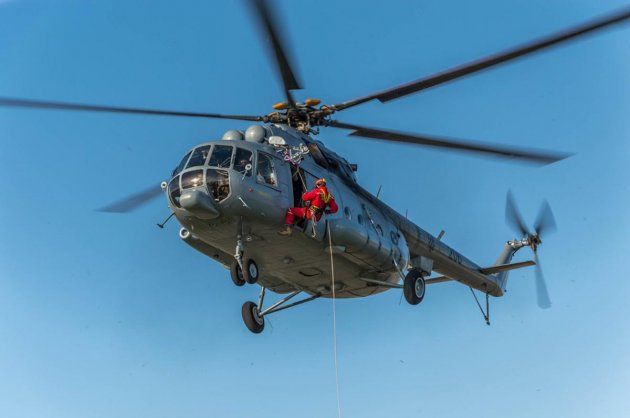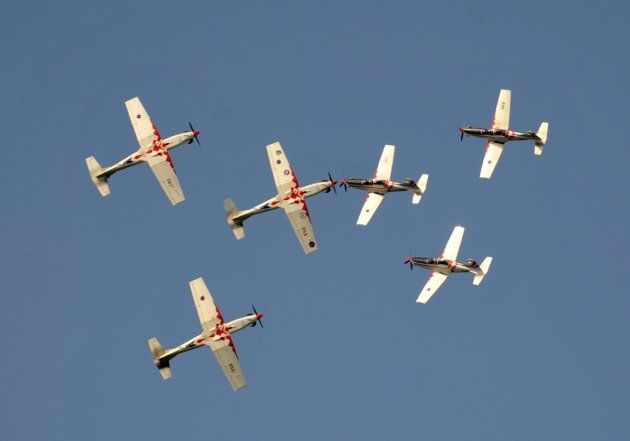Despite hard times, Croatian Air Force has managed to survive.
In the last 16 years, Croatia’s armed forces been have significantly reduced in numbers, actually more than halved, but in some areas the numeric decline was less pronounced. During these years, Croatian Air Force and Air Defence managed to survive and even modernize some of its resources. In late 2016, Air Force has nearly a hundred different aircraft, of which 49 planes and 48 helicopters, reports Večernji List on December 28, 2016.
During this period, more attention has been paid to the helicopter segment, while fighter plane sector developed more slowly, with the most elite part of the Air Force, fighter aircraft, being completely ignored. Until recently, there was even the danger that it could be completely eliminated. Air Force currently has 14 Russian-made transport helicopters (Mi-8, Mi-17), which are predominantly based at Divulje near Split and are often used for civilian purposes, performing numerous medical flights, participating in rescue operations, and helping extinguishing wildfires.

At the Lučko heliport near Zagreb, there is a squadron of 10 modern Mi-171 SH helicopters which Croatia acquired some ten years ago as a payment for Russian debt worth 65 million dollars. Two of these helicopters are permanently stationed in Kosovo as part of the KFOR peacekeeping mission. Their resources will expire in 2017, which means that they will spent the year being overhauled.
At the Zemunik airbase near Zadar, there are eight Bell 206 B-3 Jet Ranger helicopters, which are used for training helicopter pilots, but also for reconnaissance and surveillance purposes. With the acquisition of 16 American reconnaissance and combat helicopters OH-58D Kiowa Warriors, the helicopter component of the Air Force has been significantly modernized. Although these helicopters are armed with machine guns, guided and unguided missiles, they cannot be called “flying fortresses” or “murderers of tanks” since there is no armour protection for the crew and engine is quite vulnerable. Transition from Russian to American transport Black Hawk helicopters is also planned.
Zemunik airbase is the educational centre for plane pilots. They start by flying in 5 light Zlin aircraft, in which they spend about 50 hours during initial training. Then they move on to the more powerful Pilatus PC-9 aircraft, flying for about 200 hours. There are 20 Pilatus aircraft and, in addition to Croatian pilots, the third generation of pilots from Oman also uses them, so the Air Force even makes some money on them. There planes are also used by Wings of Storm acrobatics team.

The Zadar Airport is also home to the fire-fighting squadron of the Air Force, which has 6 Canadair CL-415 aircraft and 6 AT-802 air tractors, so Croatia, with its squadron of 12 fire-fighting aircraft, has the largest fire-fighting squadron in Southeast Europe after Greece. In recent years, Croatian planes have extinguished fires in Bosnia and Herzegovina, Montenegro, Slovenia, Portugal, Greece and Israel.
A squadrons of MiG-21 fighter jets is located at Pleso near Zagreb. From this airport, Croatia monitors its skies and performs “air-policing” duties as part of NATO. Due to its geographical shape, Croatia should also have another pair of interceptors ready in the southern part of the country. Necessary infrastructure does exist at the Split airport, built in previous decades by the Yugoslav National Army.
Croatia should soon make a decision on the acquisition of new fighter squadron, and it is expected that the Air Force will keep this elite segment. The problem is that Croatia currently has just a dozen supersonic aircraft, which were produced 40 years ago, so the new planes will also require a new generation of pilots. Therefore, Air Force will have to step up education and training of new pilots. That will not be easy since out of 100 young men (and women), only two on average can meet rigorous medical requirements for becoming pilots of supersonic aircraft.







